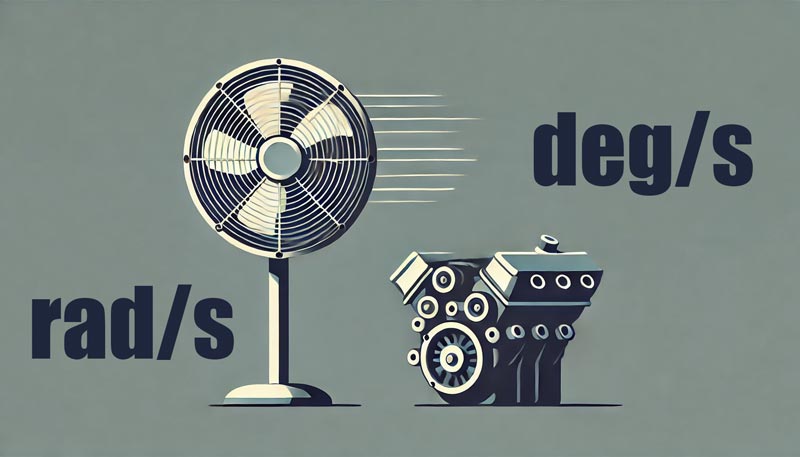This online converter allows you to convert Radians per Second (rad/s) to Degrees per Second (deg/s) and vice versa. It is an essential tool for applications in physics, engineering, and rotational motion calculations, providing quick and accurate conversions between these two units of angular velocity.
Radians per Second (rad/s) to Degrees per Second (°/s) Converter
Enter a value in rad/s in the field below and press the button to convert it to °/s.
Radians per Second (rad/s)
Result in Degrees per Second (°/s)
How to Use the Calculator
To use the converter, simply input the value in Radians per Second (rad/s) into the provided field. The corresponding value in Degrees per Second (deg/s) will be automatically calculated and displayed in the output field. Similarly, if you input a value in Degrees per Second, the calculator will convert it to Radians per Second.
Formula Used
The formula used to convert Radians per Second to Degrees per Second is:
Degrees per Second (deg/s) = Radians per Second (rad/s) × 180/π
For the reverse conversion, you would divide Degrees per Second by 180/π to get the value in Radians per Second.
Precalculated Values
Here are some commonly converted values:
- 1 rad/s = 57.2958 deg/s (approximately the angular velocity of a slow spinning fan)
- 2 rad/s = 114.5916 deg/s (angular speed of a typical ceiling fan on medium)
- 3 rad/s = 171.8874 deg/s (angular speed of a ceiling fan on high)
- 5 rad/s = 286.4789 deg/s (typical small motor)
- 10 rad/s = 572.9578 deg/s (high-speed motor)
- 20 rad/s = 1145.9153 deg/s (industrial machinery)
- 50 rad/s = 2864.789 deg/s (ultra-fast rotating devices)

Both fan and engine rotating speeds can be measured in rad/s or deg/s
History and Interesting Facts
Radians and degrees are both units of angular measurement. The radian is the SI unit, commonly used in higher-level mathematics and physics due to its natural relationship with other fundamental constants. Degrees, on the other hand, are more common in everyday applications, especially in navigation, engineering, and many practical fields. The relationship between radians and degrees is deeply rooted in the geometry of circles, where 360 degrees equal 2π radians.
CalcuLife.com








Leave A Comment